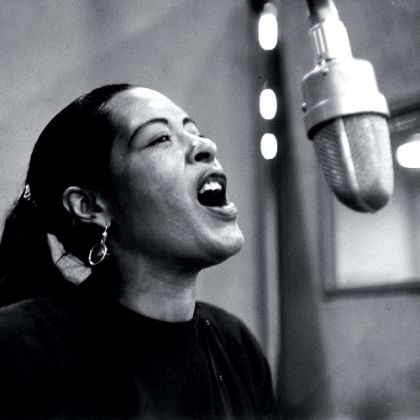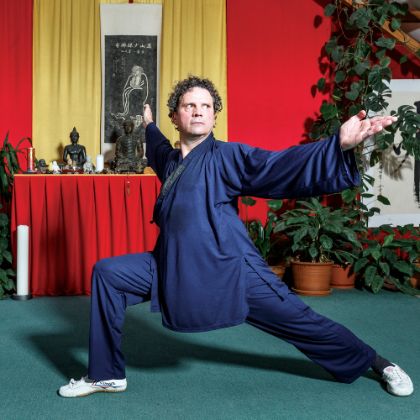Listen Magazine FEATURE
Then Fall, Hamilton
I rather tell thee what is to be heard than what I hear.
By Ben Finane
friends, listeners, lend me your eyes and ears;
i come to place Hamilton in context,
not to praise him, for others have in spades.
eleven tonys did Hamilton claim;
he took fair pulitzer (I guess there’s that)
and brought black music to the great white way:
Excited Boomers who had nary heard
Chuck D nor Kid Capri nor Kool Moe Dee
swooned to exotic beats and righteous words.
o judgment! thou art fled, for at his best
Fair Hamilton is middling eminem:
and hip-hop should be made of sterner stuff.
selector, come! rap tells explicit tales;
Careless misogyny can fill her sails —
bold boasts of violence, prowess, and the like…
and yet! rough fantasies all greatly pale
to violence all too real of poverty,
Oppression, racist policies and laws.
the nineteen nineties saw gold Hip-Hop’s peak
before the bloat of baser gangster rap
had taken hold — and fast upon his heels,
Money and Material, once eschewed,
now fain pursued at the expense of justice.
if my taste skews golden to the east,
cast blame upon my bounded time and place:
Per the Floyd, we’re but all we touch and see.
some thoughts below: i prithee hear my case
for these, a dozen albums full of grace.
1 | KENDRICK LAMAR
To Pimp A Butterfly | 2015 | aftermath
And when I wake up, I recognize you’re lookin’ at me for the pay cA rich gumbo equal parts hip-hop, jazz, funk and spoken word, at once sacred and profane, Kendrick Lamar’s To Pimp A Butterfly addresses (at least from this Caucasoid’s perspective) the psychosis that can afflict men who are living while black in the United States. Many of America’s greatest comedians — Richard Pryor, Martin Lawrence, Dave Chappelle, Katt Williams — have used the mic to explore their own LWB schizophrenia, and Lamar does so here artfully and with brutality. A host of collaborators include George Clinton, Snoop Dogg and Robert Glasper. Poetry slam, celebration, history lesson, jam session, confessional, manifesto — the result is hard to define but the experience won’t leave you unchanged.
2 | DRAKE
If You’re Reading This, It’s Too Late | 2015 | cash money
Oh my God, oh my God, If I die I’m a legend Melancholic semi–autotuned rapper–singer Aubrey Drake Graham (aka Drake)’s greatest, most hypnotic and compelling album/“mix tape” to date — and I’m betting his best going forward. The Toronto native’s dark ode to his city is enveloped in chauvinism and braggadocio, but the dispatch within confesses to insecurity, malaise and existential woes. Eschewing rich samples for cheap loops, the mix-tape designation permits Drake to juxtapose stylistic shifts and accommodates his mercurial temper, but the artist’s haunted, triumphant journey is remarkably cohesive, particularly the opening stretch, from the vertigo of “Legend” to the self-acceptance of “No Tellin.’ ” PartyNextDoor, Lil Wayne and Travis Scott guest to fine effect.
3 | THE STREETS
Original Pirate Material | 2002 | vice/atlantic
I’m forty-fifth generation Roman, but I don’t know ’em Coming out of the U.K.’s garage movement, the Birmingham–based Mike Skinner, aka The Streets, decisively broke through the local scene and onto the international stage with a sharp, inspired album of wicked rhymes delivered idiomatically that journeys from the heights of grandeur (“Turn the Page”), epic reverie (“Weak Become Heroes”) and heartbreak (“It’s Too Late”) to the quotidian slog of third-division relegation (“Same Old Thing”) — to say nothing of an imagined dialogue between a brawling “lawabiding” alcoholic gettin’ pissed at the pub and introverted “criminal” stoner, who stays home and plays video games; with the latter, Skinner slyly signals an extramusical generational shift in jolly old England.
4 | MOS DEF
Black On Both Sides | 1999 | rawkus records
The system breaks man, child and women into figures /
Two columns for who is and who ain’t niggas.
A beautifully crafted, laserfocused statement on hip-hop (“Fear Not of Man”), blackness (“Mr. Nigga,” with Q-Tip, “Rock N Roll”), and identity (“UMI Says”), the preternaturally gifted rapper–singer–multi-instrumentalist Mos Def (now Yasiin Bey) spits a friendly, conversational flow that cuts you when you get too close. Mos is at peak genius with “Mathematics,” a wideranging, insightful, creative, well-constructed piece of social criticism on the stacked deck that America deals the negro.
5 | WU-TANG CLAN
Enter the Wu-Tang (36 Chambers) | 1993 | loud records
Here I go, deep tight flow / Jacques Cousteau could never get this low.
This record is crazy. The Wu-Tang Clan, hip-hop’s greatest super group, launched its debut album with a kung fu–infused narrative that borrowed audio samples from the English dub of Shaolin and Wu Tang, a 1983 Hong Kong martial arts film. The album is loosely divided in Shaolin and Wu-Tang sections — and contains samples from the likes of The Charmels to Hall & Oates to Thelonious Monk. With sharp flow like a samurai sword, myriad lead rappers surge in and out of the tracks like, well, kung fu masters, and many of them would go on to record great solo projects, most notably the inimitable and late Ol’ Dirty Bastard’s Return to the 36 Chambers: The Dirty Version (Elektra) and GZA’s Liquid Swords (Geffen/ MCA). R.I.P., ODB. “Shimmy Shimmy Ya, Shimmy Yam, Shimmy Yay / Gimme the mic so I can take it away.”
6 | A TRIBE CALLED QUEST
Midnight Marauders | 1993 | jive
Street poetry is my everyday.
A Tribe Called Quest was the greatest group in hip-hop: socially conscious, imaginative, mellow, abstract, alternately serious and hilarious, and groovin.’ ATCQ’s Midnight Marauders edges out the more conceptual The Low End Theory (Jive) for the bounce (a twelvebeat loop, watch out!) of “Electric Relaxation,” the smooth we-got-it-like-that of “Award Tour,” the brutality of “Sucka Nigga” (set over a “Red Clay” cover by Jack Wilkins of the Freddie Hubbard tune — deep) and the old-school throwback of “We Can Get Down.” Q-Tip may be the most listenable MC whose accessibility doesn’t sacrifice weight. R.I.P., Phife Dawg: Jordan with the mic, Trini gladiator, anti-hesitator, smooth like butter.
7 | BEASTIE BOYS
Check Your Head | 1992 | vice/atlantic
Don't touch me, cause I'm electric, and if you touch me, you'll get shocked! Shocked! Shocked!
Coming as a follow-up to the sample-built wizardry of Paul’s Boutique (Capitol), the frat-boy-cum-hipster Beastie Boys picked up their instruments for the first time on record. The punk-rock spareness of guitar, bass and drums (along with keyboardist Mark Ramos Nishita, a.k.a. Money Mark) packs a punch against beats and samples — with added moments of light Zen. The rhymes are good ’n’ goofy, but the presence of vocal filters reveals that the words themselves are subservient to the groove, coalesced by powerhouse producer Mario Caldato Jr. R.I.P., MCA: “If you can feel what I’m feeling then it’s a musical masterpiece / If you can hear what I’m dealing then that’s cool at least.”
8 | M.C. SOLAAR
Qui sème le vent récolte le tempo | 1991 | musicrama
Le tempo est roi, dans l'arène musicale / Les rênes sont à moi, torero lexical.
A francophone rapper with Senegalese and Chadian origins né Claude M’Barali, MC Solaar’s debut album translates as “[He] Who Sows the Wind Reaps the Tempo.” His acid-jazz flow is fast, intelligent, tight, très mellow, filled with wordplay — and in French. “Quartier Nord” unloads rapid fire; “Caroline” is a passionate ballad, and “Armand est mort” is worthy of the Marvin Gaye sample it employs. There is humor, too, from the fashion industry (“Victime de la mode”) to academia (“Matière grasse contre matère grise”). Chapeau.
9 | PUBLIC ENEMY
Apocalypse '91: The Enemy Strikes Black | 1991 | def jam
These days you can't see who's in cahoots / 'Cause now the KKK wears three-piece suits.
The most righteous, boldest, and deepest of rap groups, Apocalypse ’91 is Public Enemy frontman Chuck D’s letter to the black community: a warning (“Can’t Truss it”), a rebuke (“1 Million Bottlebags”), a call to action (“By the Time I Get to Arizona”) and a threat to the tabloids (“A Letter to the New York Post”); the album is uniformly hard and pristine. Though he doesn’t “claim to be a preacher,” Chuck D remains hip-hop’s spiritual leader.
10 | DIGITAL UNDERGROUND
Sex Packets | 1990 | tommy boy/euroband
Rich, poor, high, low or upper-middle class / Let's all get together and have a few laughs.
The cassette version (remember those?) of Sex Packets boasted a “Safe Side” and a “Sex Side,” along with three extra tracks, and funky hip-hop collective Digital Underground struck alternately playful and raunchy gold. The concept album built a mythology around the titular designer pharmaceutical/self-roofie that would deliver bespoke wet dreams to its user (tailored to gender and preference). Packed with Parliament/Funkadelic samples and jazz piano licks, the record let us all hang out and doowhatweliked, while Shock G’s “The Humpty Dance” made me a karaoke legend from Staten to the Boogie Down.
11 | RUN D.M.C.
Raising Hell | 1986 | profile/arista
And in the City it's a pity cause we just can't hide / Tinted windows don't mean nothin', they know who's inside
The unofficial beginning of Hip-Hop’s Golden Age is Raising Hell. Two rappers trading rhymes and a deejay. “Walk this Way,” with Aerosmith, singlehandedly brought rap to rock, and thus, to the masses. The beat and bells on “Peter Piper” remain bulletproof. R.I.P., Jam Master Jay: “Cause he’s adult entertainer, child educator / Jam Master Jay, king of the crossfader.”
12 | JAMES BROWN
Sex Machine | 1970 | KING
I don't want nobody to give me nothin' / Open up the door, I'll get it myself.
Forget what you read in some book about rap origins. The most sampled artist in hip-hop by far, far and away is James Brown. That’s because James was doing loops before there were loops. And he was rapping before there was rap. Quoth Eddie Murphy: “‘HEEEEYY!’ That’s a James Brown lyric. He wrote that shit.” Nothing captures Brown and the J.B.’s better than their live double album in Augusta, G–A. You can’t fake the funk live. Bear witness to the tightness, the soul and the groove. R.I.P., James Brown, a.k.a. Mr. Dynamite, The Hardest Working Man in Show Business, Soul Brother Number One, The Minister of the New New Super Heavy Funk, Mr. Please Please Please, The Godfather of Soul, The Godfather of Funk, and I’ll add one more: The Godfather of Hip-Hop.
This article originally appeared in Listen: Life with Music & Culture, Steinway & Sons award-winning magazine.
related...
-

'But Beautiful'
A life with Billie Holiday
Read More
By Lara Downes -

Kung Fu and the Art of Pianism
Andreas Haefliger finds a freer connection to the keyboard.
Read More
By Jens F. Laurson -

Conrad Tao: Leaving the Comfort Zone
Adventurous as a pianist and composer, Conrad Tao is reshaping the image of the piano virtuoso for the twenty-first century.
Read More
By Thomas May